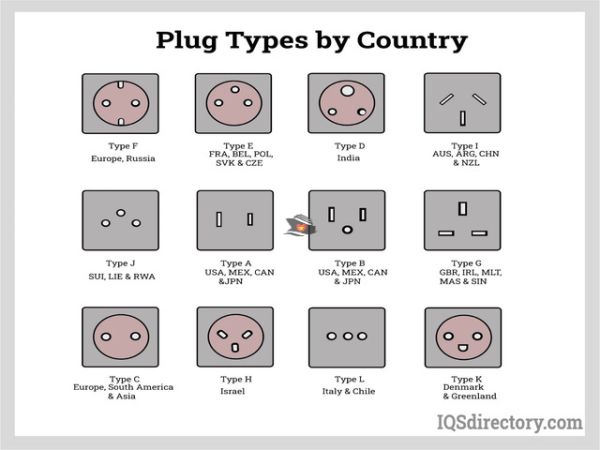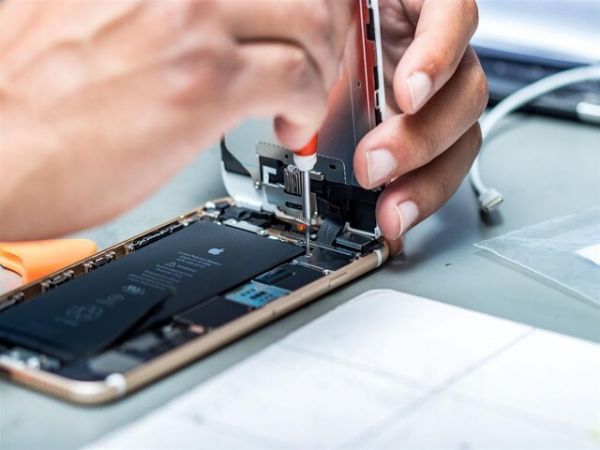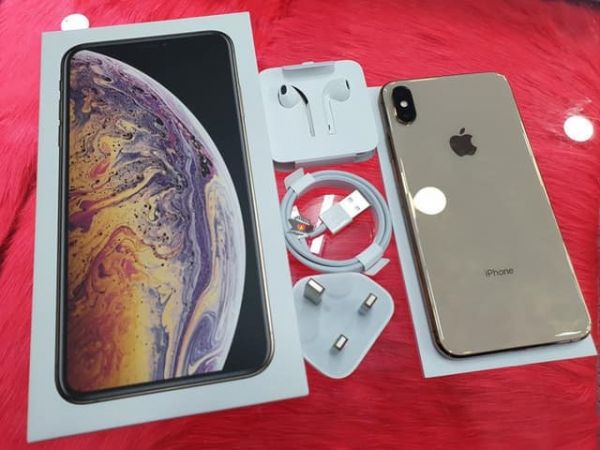VIETNAM FINE ARTS MUSEUM
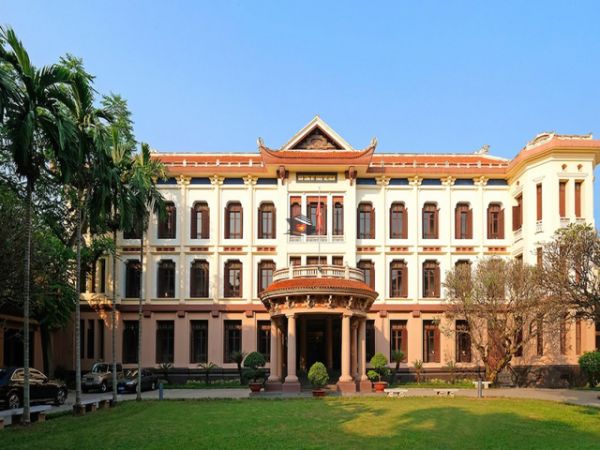
Vietnam Fine Arts Museum. The Vietnam National Fine Arts Museum is one of the country's most important institutions, displaying documents, artifacts, and typical works from every period of national life, from early prehistory and classical antiquity to the epic story of Vietnamese creative genius in the modern era.
Vietnam Fine Arts Museum Information:
Address: 66 Nguyen Thai Hoc Street, Ba Dinh District, Hanoi City
Opening hours: 8:30 am - 5:00 pm
Children under 6 years old: Free
Children from 6 - 16 years old: 10,000 VND
Students: 20,000 VND
Adults: 40,000 VND
If visitors want to hire a presenter for the trip around the museum, the fee is 150,000 VND
The Vietnam National Fine Arts Museum is located in the heart of Hanoi at 66 Nguyen Thai Hoc Street, Ba Dinh District. Visitors can get to the museum using any mode of transportation. Aside from showcasing a significant number of important artifacts and pieces of art from various eras, the Museum also has an appealing teaching area with numerous thematic tours for visitors.
The History of the Vietnam Fine Arts Museum:
This museum was created during the French colonial period in the 1930s to serve as a study center for the daughters of French officials.
In 1962, the structure was restored to house prehistoric Vietnamese artworks. As a result, the architecture of the Hanoi Fine Arts Museum was changed from its initial European form to include Vietnamese architectural characteristics.
The Vietnam Fine Arts Museum was formally opened to tourists in 1966, with a total space of 4,200 square meters and an exhibition area of 1,200 square meters. Between 1997 and 1999, it was enlarged to 4,737 square meters, including a 3,000-square-meter display space.

Admire a magnificent collection of artwork:
The Hanoi Fine Arts Museum has kept almost 20,000 objects. One-ninth of them is permanently displayed. The presented artworks demonstrate:
Fine arts of the Vietnamese ethnic groups.
Art throughout the Stone and Bronze Ages, as well as fine arts from the Vietnamese feudal periods.
Vietnam's art styles include folk, handcraft, and modern.
The museum's permanent displays include:
Prehistoric art.
Fine arts from the eleventh to nineteenth centuries Art forms include contemporary, applied, and folk art.
Vietnamese ceramic art from the eleventh to the twentieth centuries.
Explore the creative section for kids:
In 2011, the museum established a creative area as part of its Fine Arts Education program. This room, located on the third level of the building, allows children to try their hand at painting and sculpture. Children are introduced to folk and modern art in a basic and clear way via experiential activities like producing collages or paintings.
Enjoy coffee in an artsy setting:
After touring the museum, you may relax at the on-site café. The meals and beverages here are pretty delicious. This is also where many young people snap wonderful photographs when visiting the museum.

What to visit in the Vietnam Fine Arts Museum?
Visitors to the Museum get the opportunity to explore a huge collection of Vietnamese folk art. Folk paintings frequently contain vibrant colors and vivid content, depicting a variety of topics such as worship, congratulations, daily activities, and notable historical characters such as Dong Ho, Kim Hoang, and Sinh Village paintings.
Folk sculptures are constructed of terracotta, metal, and carved wood and portray Vietnamese life and traditions. The Museum's ceramic collection will be a light waltz as the characteristics of the stages of unglazed and glazed ceramics are introduced, including crackle-glazed ceramics, celadon ceramics, brown-flowered ceramics (Ly and Tran dynasties), white-and-blue-glazed ceramics, and modern ceramics.
Another benefit of visiting the Museum with children is the opportunity to explore the Creative Space for Children. It was founded in 2011 in an open and flexible environment. The activities at the "Creative Space for Children" are appealing and appropriate for children of all ages. Children are free to explore, perceive, and experience art from the museum's holdings, including painting, pottery, sculpture, and folk art.
According to the renowned painter Leonardo da Vinci, painting is poetry that is seen rather than felt, while poetry is painting that is felt rather than seen. Because words cannot express the whole worth of the Vietnam National Fine Arts Museum, you should come and experience the arts for yourself, to explore, relax, and hang out in Hanoi City.
Research and Collection: The purpose of these excursions was to gather ancient artifacts, sculptural pieces, paintings, and graphic arts from art exhibits as well as painters' and sculptors' collections. The Museum now houses 20,000 high-value art items.
Exhibition, Education: To meet the growing demand of visitors and show a larger number of acquired artifacts, the Museum enlarged its exhibition spaces from 1,000m2 to 3,000m2 at present. Aside from that, as the number of national and international visitors grows, the Museum has been actively developing varied thematic tours for visitors, particularly tourists.
Creative Area for Children: Established in 2011 in an open and flexible area, the activities at the "Creative Space for Children" are appealing to children of all ages.
International Relations: As a member of ICOM, the Asian-Europe Museum Network, and the Vietnamese Museum Network, the Vietnam National Fine Arts Museum has staged several exhibits reflecting the Museum's collections overseas and has also hosted international exhibitions at the Museum. This is to provide access to the globe in the disciplines of art and museums.

Vietnam Fine Arts Museum Exhibitions:
The Vietnam National Fine Arts Museum has three levels and a display space of almost 3,000 m2. The Museum now displays over 2,000 pieces in its permanent exhibition halls, ranging from ancient antiquity to the modern age. Furthermore, the Museum hosts a variety of solo exhibits by various organizations and artists, serving as a platform for the artist community. Every year, the Museum organizes traveling exhibitions in various cities around the nation and overseas, including the United States, Russia, England, France, Italy, Spain, Japan, South Korea, Singapore, and Laos.
As French painter Edgar Degas once said, "Art is not what you see, but what you make others see," and the masterpieces on display at the Vietnam National Fine Arts Museum serve admirably as a scream of freedom, artist creativity, and, most importantly, without words but in various shapes and colors, demonstrating the long history of development of diverse fine arts.
A storyteller for prehistoric and early historical art, fine art from the 11th to 19th centuries, the twentieth century to the present, and traditional applied arts that carry craftsmen's hearts, brains, and souls. Artisans have added artistic value to ordinary things and religious rites.
The Vietnam Fine Arts Museum now has about 18,000 domestic objects representing Vietnam's art from prehistoric times to the present.
Prehistoric and Early History Fine Arts: This exhibition features artifacts from many subjects, including production equipment, weaponry, daily things, decorations, artistic figures, and musical instruments from the past to the present.
The 11th to 19th centuries AD saw the most magnificent development of Vietnamese antique sculpture.
Art from the early twentieth century AD until the present day: The exhibition is organized into two sections: the divergence of art history (1925-1945 and 1945-1954) and material works, including lacquer, silk, oil paintings, graphics, and sculptures (from 1954 to the present).
Traditional Applied Art showcases handmade techniques on many materials, including bamboo, fabrics, shell inlays, conch, and metal sculptures.
The Museum's collection includes folk paintings and statues, as well as Vietnamese ceramic art from the 11th to 20th centuries.
The exhibition showcases unglazed and glazed ceramics from various periods, including Celadon Glaze and Ivory-Yellow Cracked Glaze Ceramics, Brown Pattern Ceramics, Cobalt-Blue Pattern Ceramics, and Contemporary Ceramics.
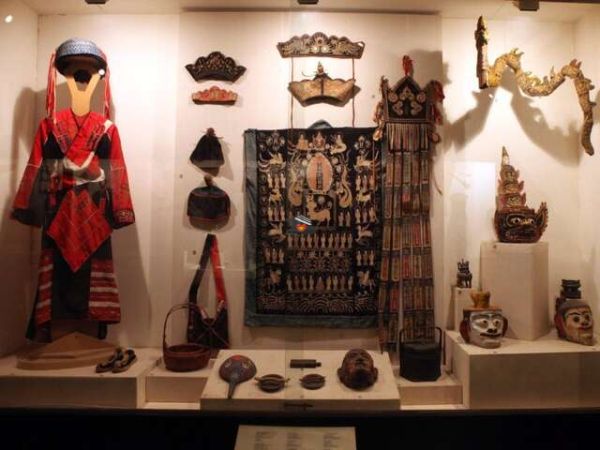
How to get to the Vietnam Fine Arts Museum:
There are several methods to travel to the museum, including taxi, motorcycle, and public transportation.
Many bus lines in Hanoi pass near the museum, including bus numbers 9A, 18, 32, and 41.
The bus is regarded as the most cost-effective mode of transportation for individuals living distant from the city center. You may also rent a bike from your hotel or other rental companies to get about independently. Please keep in mind that you should inquire about the pricing and thoroughly inspect the vehicle before purchasing.
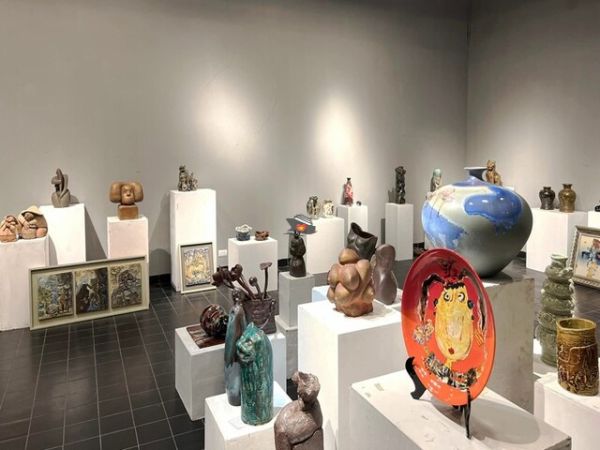
Tips for visiting the Vietnam Fine Arts Museum:
- Don't touch the displays:
- All of the museum's exhibits are highly valuable. Touching might cause them to lose their natural attractiveness.
- No filming or taking photographs.
- Most museums do not allow photography. It is preferable to view the exhibits with your own eyes rather than snapping photographs.
Tour with a guide:
If you wish to understand more about the items on display, hire a guide or bring a guidebook. The guide will allow you to appreciate and enjoy the art most professionally.
Hanoi Fine Arts Museum is a fascinating place where art enthusiasts and others may immerse themselves in the world of art. The museum plays an important role in introducing and promoting Vietnamese cultural and historical values.
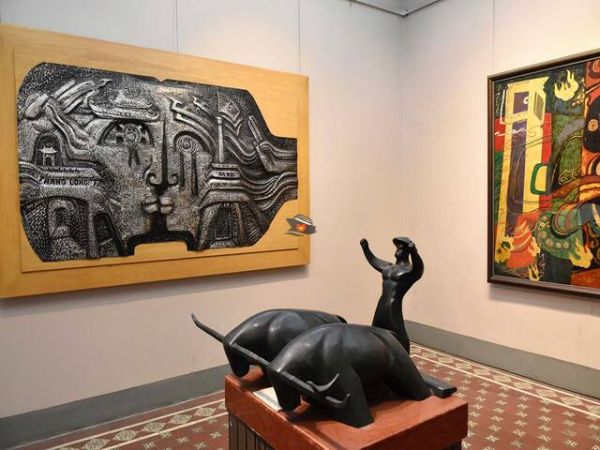
Hotline/ WhatsApp: +847-6666-0606
Email: info@friendlytravel.vn





